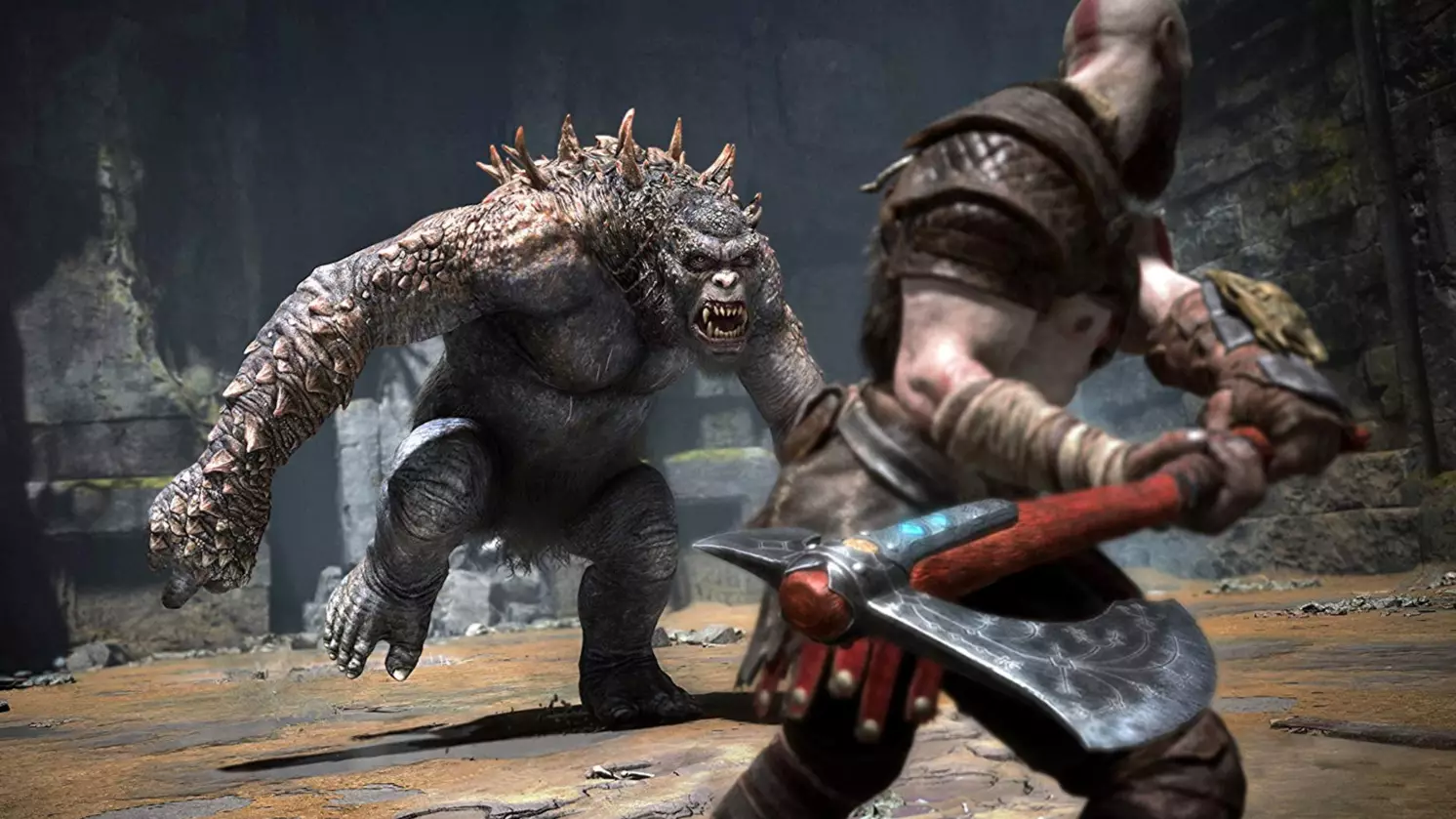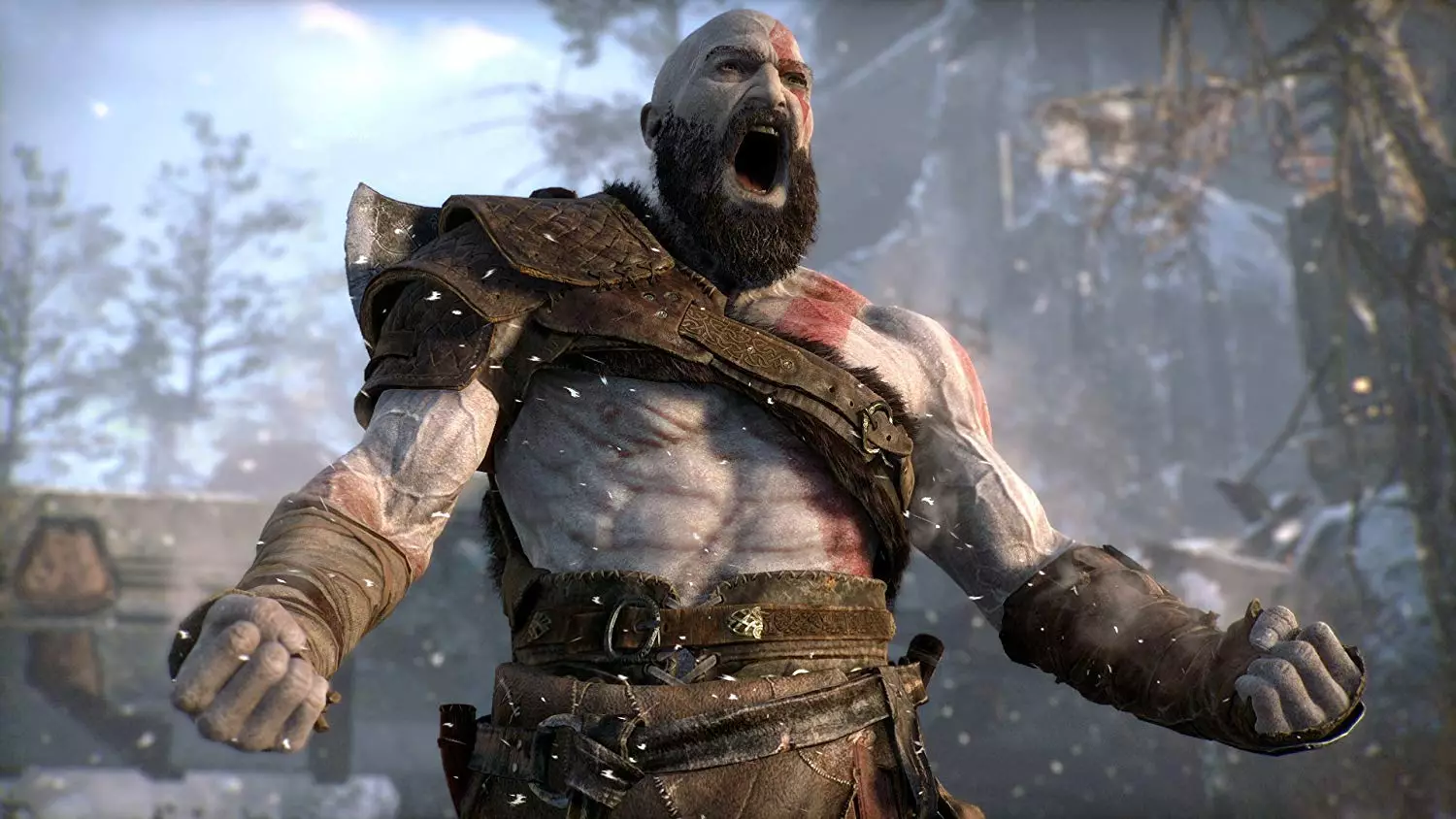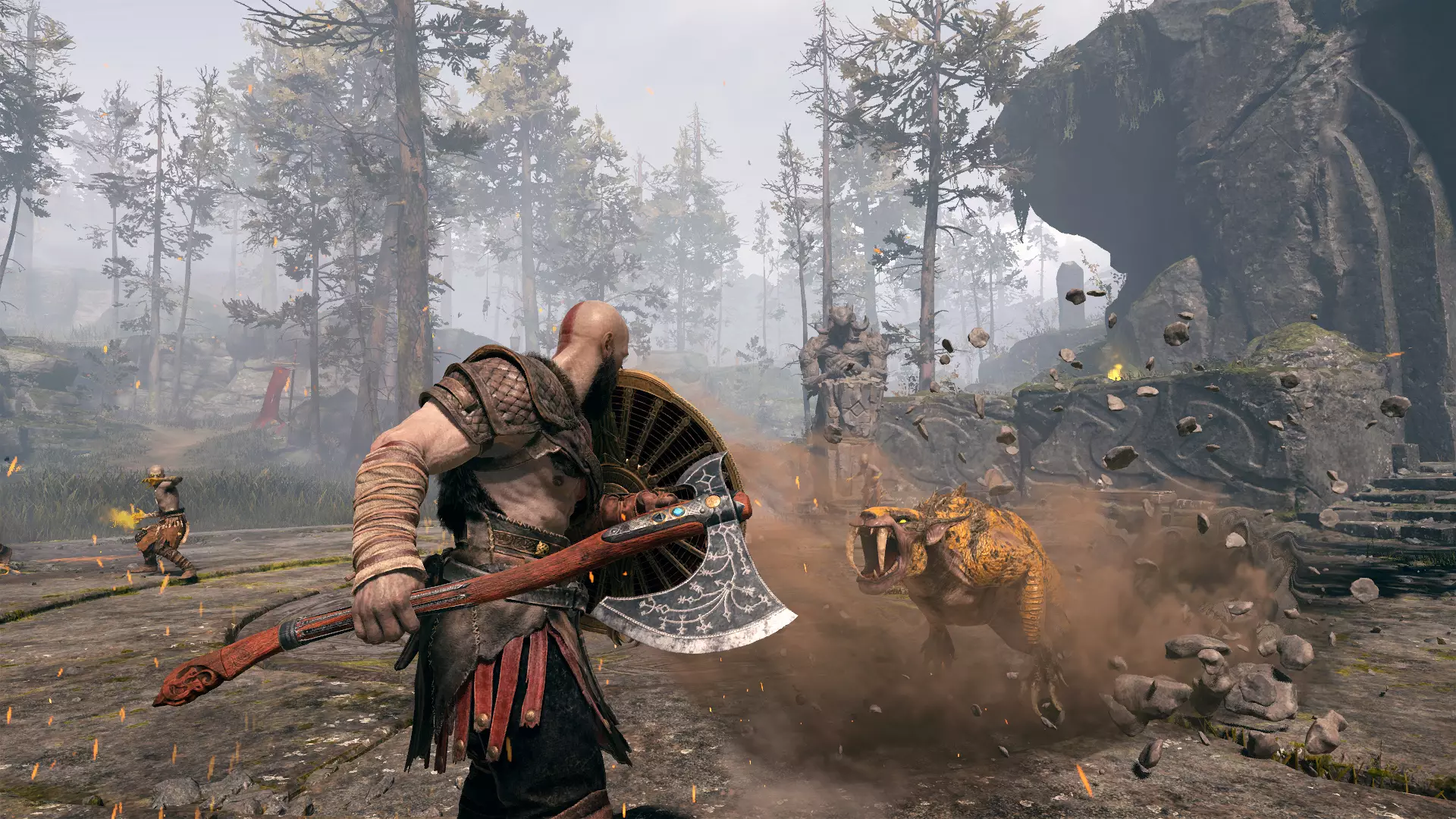
The latest God of War might stand out most for its move to a new mythology and by turning Kratos, the legendary Spartan Warrior, into a father. But the game's combat also saw a significant reimagining.
The series had always been known for its gratuitous violence and fast-paced combat - and while that was certainly present in 2018's game, the weapon you dealt out death with was largely sidelined. In the earlier God of War games, Kratos wielded the Blades of Chaos, two cruel blades held together with an iron chain. You would whip these around like a pair of particularly nasty nunchucks, carving up any enemy in your path. But for the new game, creative director Cory Barlog wanted to swap the iconic weapon in favour of something new: an axe.
Advert
At first, the axe was only to be a melee weapon - a slower, more powerful weapon than the Blades of Chaos. It would make combat more blunt, and the change of pace would fit the older Kratos better. To get there, though, Barlog did something rather strange. He showed the team videos of Russian street fights.
"The axe wasn't a throwing axe for a while," Barlog recalled in the AIAS Game Maker's Notebook podcast. "I wanted to focus [the team] on making the axe feel different from other weapons [...] I was showing them these fight videos where these people go to random places, like a parking garage in Russia, and it's a bunch of people punching each other."
Barlog was pointing out how real people react to being hit. "When you look at a fighting game we've done, we do a single animation that follows through and then we do a hit pause in the middle of that and then the animation is identical - whether you succeed or you fail, the animation is unchanged. I said, 'If you watch this [...] when they actually connect with somebody their whole body changes, the stumble afterwards changes, the follow through changes. Everything feels different and it feels weighty and heavy. Can we do that?'"

Advert
The pre-production team spent a lot of time building prototypes. But they didn't intend to use them in the game, as Barlog explains. "We used about 20% of what we experimented with." But these experiments set the tone for the combat team. "If, in the beginning, all we'd done is go full magical axe we might not have ended up with that marriage between the grounded and the fantastic," Barlog says.
What Barlog didn't know at the time is that George Mawle, one of the team's programmers, and systems design lead Vince Napoli had been quietly working on a magical axe for months. You could "Throw the axe, and it comes back," Barlog told VentureBeat. "It would be technologically driven, so it could stick anywhere in the world. [...] They showed me, right at the time when I thought we had the foundation in there." Mawle and Napoli weren't sure if Barlog would yell at them, but he loved it.
Napoli goes deep on the axe's development on a blog entry, explaining that "We were certain we needed a ranged attack, and before we attempted having the axe fire some kind of projectile, we wanted to see if we could just throw the weapon itself. Hitting an enemy with a solid / large object is just more satisfying than using a projectile."
As Napoli and Mawle played with the weapon, they realised they could do a lot more with it than just throwing the axe at an enemy. Rather than have the player go and pick up the axe from the ground, they could map the triangle button to recall the axe - just like Thor's hammer, Mjölnir.
Advert
That recall led to even more ideas. "One of the first things we realised was that hitting enemies on return was basically mandatory," Napoli writes. "It wasn't only what you would intuitively expect, it was something that was both satisfying to do on purpose and have happen accidentally." The designers found it so satisfying that they tweaked the axe's return path so it would go slightly out of its way to hit enemies between its starting point and the player. That flight path of the axe could then be augmented further with a special pommel, making it fly off in unusual directions to hit enemies.
The team worked on the axe for years, making changes to how it worked right up until the final months of God of War's development. One aspect of the system that saw a lot of change seems simple, but getting it right was necessary to make sense of both the weapon and the wielder: the catch animation.
At first, Kratos would hold his arm up above his head:
While that catch seemed "bombastic" and that was in line with the old style God of War games, it fit the new Kratos better to make the catch more casual:
Advert
"We wanted to make sure that it feels strong, but we were very careful not to make it feel like Kratos can't handle the axe, or that it's too heavy for him," Napoli writes in his blog. "We had to strike a very specific balance so that the catch feels casual, like he does it all the time, but still carry some momentum through so you can feel the axe's speed."
More than that, however, the small touch that stands out the most is the axe's wiggle. When you throw the axe at a large enemy - or miss entirely, and hit a wall - it sticks in place, embedding in the surface. To give you a sense of how firmly it's stuck in the place, when you try to recall it, it shudders and wiggles before launching back towards your hand.

Advert
That wiggle took a lot of tweaking to get right. At first, the axe stayed and wiggled for a while; but playtesters complained the weapon took too long to return to you. "Strangely enough, it actually didn't matter if we sped up the return to compensate, because it was the added delay before moving that made it feel longer," Napoli writes. Eventually the team settled on just 0.1 seconds of wiggle before the axe returns - but the effect is well worth it.
Much like the weapon being thrown into enemies, the Leviathan Axe has embedded itself in the God of War series, and it would be a surprise not to see it return in future games. Something we won't be seeing, however, is Napoli. The system's designer has left Sony Santa Monica. That said, he's landed at the best place for his skills - Crystal Dynamics. The team is currently working on Marvel's Avengers - and Napoli working away on Thor's hammer only seems appropriate after his work on Kratos' Mjölnir-inspired weapon.
This article is part of a God of War series that ran on GAMINGbible's Snapchat Discover edition. Be sure to subscribe to our three-times-weekly edition on Snapchat. You can also read about how Norse myths help us predict the future of the God of War games, and how Sony's versions of those myths follow in the longtime tradition of such storytelling, online now.
Featured Image Credit: Sony Interactive EntertainmentTopics: PlayStation, God Of War